
Creating great content consistently isn’t easy. This is especially true when you’re juggling multiple projects, time gets tight, and you start cutting corners to hit deadlines. Performance declines accordingly.
It’s a downward slope. Stay on it long enough, and you might find content marketing axed from your company’s budget.
So, what’s the solution and how do you prevent that outcome? What's the secret to making sure every piece you publish is the best it can be? And how do you enforce quality across a team of in-house and guest writers?
Start by developing strong editorial guidelines.
Different companies may have different names for their style standards and expectations. For example,
Help Scout calls them editorial values. Here at CoSchedule, we call them our standards of performance. Whatever term you use, the goal is the same:
establishing and documenting a set of core principles that all content must follow.
“We are what we repeatedly do. Excellence, then, is not an act, but a habit.”
This is a quote from
writer and historian Will Durant. It's likely you've heard this sentiment expressed in some shape or form before. You will become known for the things you do often, and not just things you aspire to achieve..
As a marketer, this means if you consistently publish quality content, then your audience will come to know you as a trusted source. Since trust is hard won and easily lost, it's important to deliver quality in everything you publish.
That sounds simple enough, but it's easier said than done. That's partially because understanding what constitutes quality in the first place is subjective. Clearly defining what quality means to your company gives
every content creator something to aim for and helps remove the ambiguity around what's expected from them.
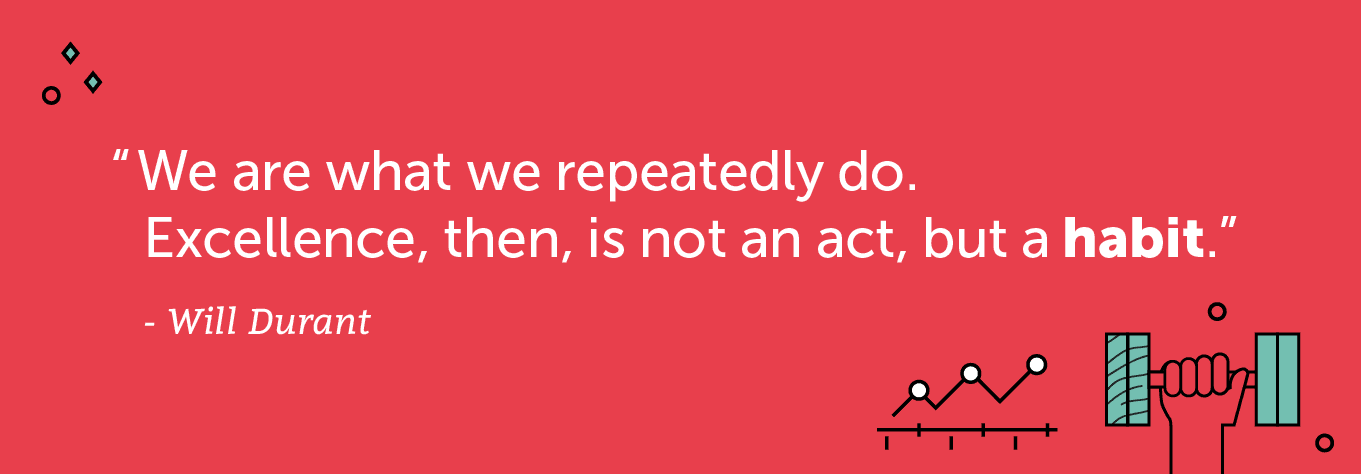
Our aim is to publish the most complete content we possibly can. Ideally, our readers shouldn’t have to read another post on a given topic. If we’ve done our job correctly, you’ll be able to find all the information you need to get a job done or learn a new skill.
This content tends to be long. While blog posts should only be as long as they need to be, it's tough to create complete content around a topic while staying under a word count. For this reason, we ignore word counts, and pay closer attention to the completeness of the information we provide.
Does this mean everyone should follow our example? Not necessarily. When we reviewed our top performing content, we discovered our top posts adhered to this principle. Content that underperformed, however, was often clearly less complete than something someone else had published. Data and observation drove our decision making.
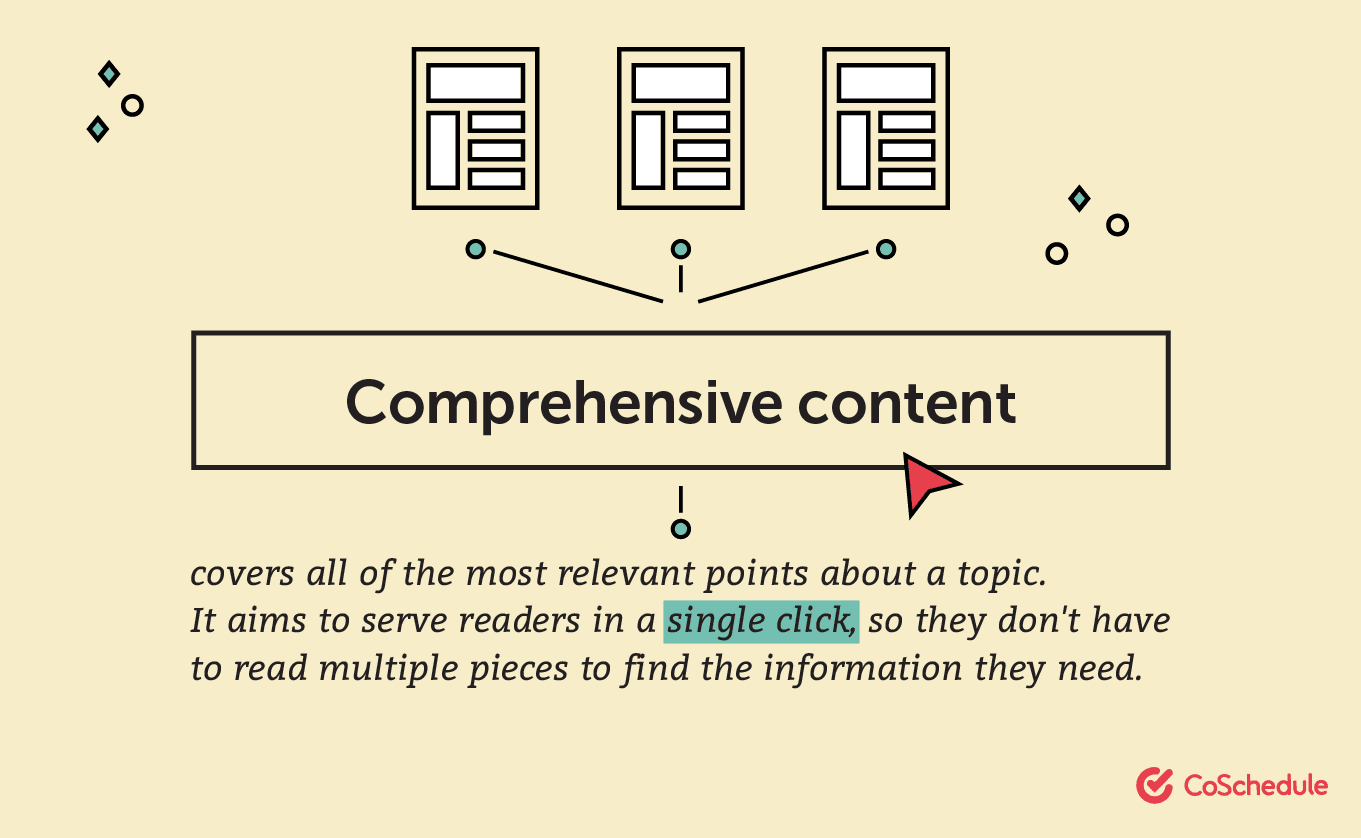
How Do We Implement This?
You've probably heard of the Skyscraper Technique. You review the top-performing content on a given topic, then create an article that covers everything in one place. This process once worked well, and it still can today, but it has a few shortcomings (
which Ryan Law from Animalz discusses here):
- It encourages copying what has already been done, rather than creating something original.
- If existing content isn't high quality, then copying it won't produce quality either.
- You might end up regurgitating bad advice, which won't help your audience.
Researching existing content is still a sound practice. It helps you come to understand your competition, know which information is most relevant to the topic, and determine what's missing that you can provide. That last point is crucial for creating content that stands out.
This process starts by reviewing the first page of Google search results for our selected topic. We then review each piece for the following items:
- Primary keyword. What is the primary keyword being targeted? Check the URL and headline for clues.
- Secondary keywords (as best as you can tell).
- Title tag and meta description. This appears as the blue highlighted text in search results.
- # of Images. Are images present, and if so, how many?
- Is video present? Does the page include a video? If so, is it an original video, or one from another site?
- Downloadable assets. Are there any bonus materials included that people can download (PDFs, templates, ebooks, etc.)?
- H2 and H3 subheadings. Is the page properly formatted with H2 and H3 subheadings, and which keywords (if any) are present?
- Missing details? Is there any important information about this topic that the page is missing?
We then consider what information we can bring to the topic that no one else can (or, at least, that no one else has). Inventing an original solution matters less than providing sound guidance, but we always want to do more than repeat what someone else has already said. By understanding topical gaps in existing content and leveraging our own perspective and expertise, we're able to create content that is both complete and original.
A lot of marketers have a love/hate relationship with search engine optimization. The common argument is that you should write for readers, and not search engine algorithms. However, we side with the belief that you can do both. Ultimately, Google (and others) want to serve users the best content they can, and by making your pages easy for it to understand, you can make sure you show up when people search for solutions to their problems and questions.
But you need to be smart about how you approach keyword research. Here's our own approach (and why it's so important for our
content marketing strategy).
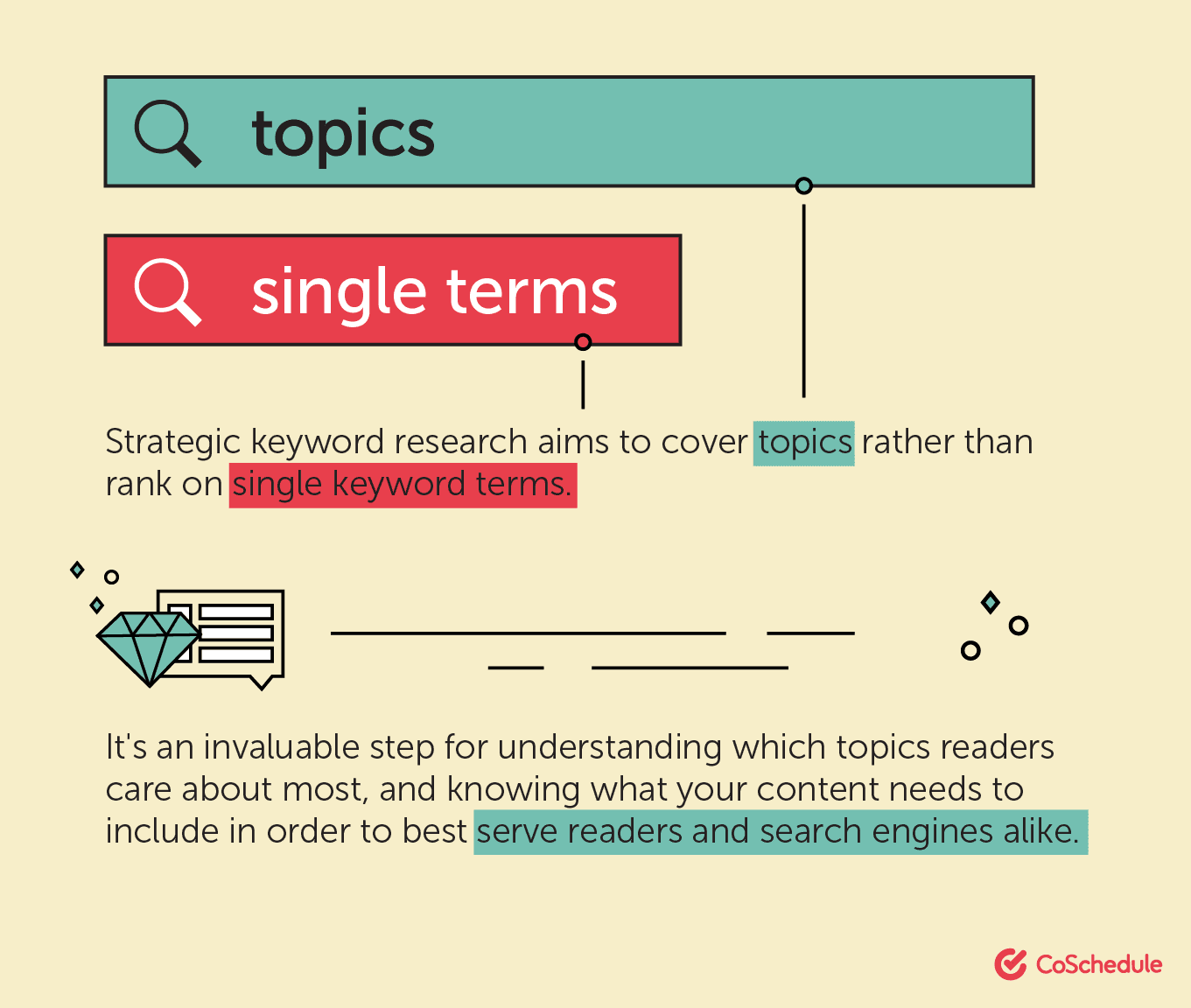
How Do We Implement This?
Content planning for CoSchedule starts with both topical and keyword research. We prioritize the topics we cover by several criteria, including:
- Relevancy. Is this something that matters to our audience? And is it at least tangentially related to the problems our product solves?
- Volume. Are people looking for information around this topic?
- Theme. Does the topic relate to an important trend or theme?
Before we dive into keyword research using a variety of SEO tools though, content ideas might come from any of the following sources:
- Conversations with our sales team. What do customers (and prospective customers) say their top challenges are?
- Social media chatter. What are topics people seem interested in on social media?
- Feature launches. What content could we create to help people get more value from recently added features to CoSchedule?
- Personal skill development. What’s something we’ve recently learned how to do that we can share with our audience?
- Rants. What are things about the industry that frustrate us? Are there ways we think marketers could get certain things done more easily (than the way they’re typically told)?
- Seasonal topics. Are there certain things that are most relevant at a certain time of year?
Then, we'll begin researching keyword data around each topic. This entails uncovering a primary keyword phrase and a set of secondary terms that help round out details within that topic. Those terms will then be placed naturally throughout the post.
Lots of content tells you what to do. Not enough shows you how to do it. This is a major source frustration for us (and the inspiration behind a lot of internal rants). So, we do our best to practice what we preach and make every piece we publish actionable.
"Actionable" means different things to different people though. A piece of advice that has practical application to the real world might be considered actionable. In a content marketing context though, we believe it's valuable to do more than offer advice, by showing readers exactly how to implement it.
In short, if we ask readers to implement a piece of advice, we do as much possible to show them how to do it.
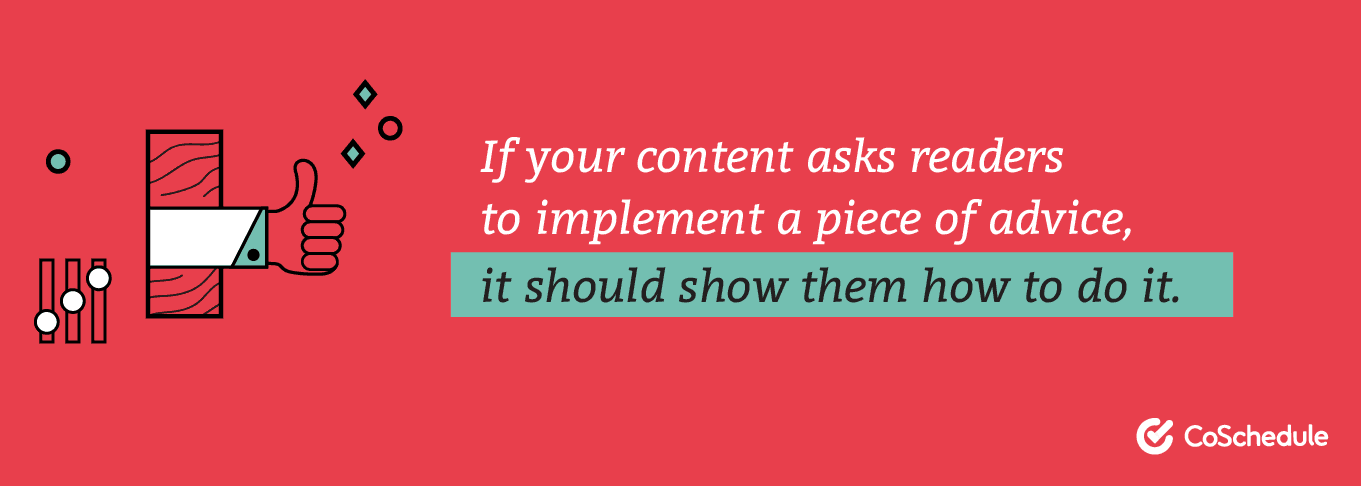
How Do We Implement This?
We incorporate actionability into our content using a few different simple approaches:
- Listing the steps required to complete a task. And if you’re going to ask someone to do something in your content, show them exactly how to do it.
- Providing examples. Sometimes it's easier to learn something when you can see what the process or end product should like it.
- Considering the reader's resources. Not all readers will have access to the same tools or budget required to execute certain things. For this reason, we try to provide alternate methods of doing things so marketers in all different types of scenarios can implement our advice.

Getting this right takes time. However, one single actionable piece of content may be more valuable to your readers (and therefore, your business) than ten pieces that only scratch the surface of any given topic. While how-to content is commonplace, actionable follow-through can still be a key differentiator.
The best content on a topic your customers don’t care about is useless. It's important not only to build an audience, but to build the right audience. That might seem obvious, but it's easy to fall into the trap of writing about topics that seem relevant to an audience, but are too distant from your product to be of actual business value.
That’s why we pay close attention to topical relevance when selecting what to write about. The marketing world is big, and there’s a lot of stuff we could cover. However, if we’re going to get the most from our limited resources, we want to make sure we spend the majority of our time writing about the things our audience cares about most.
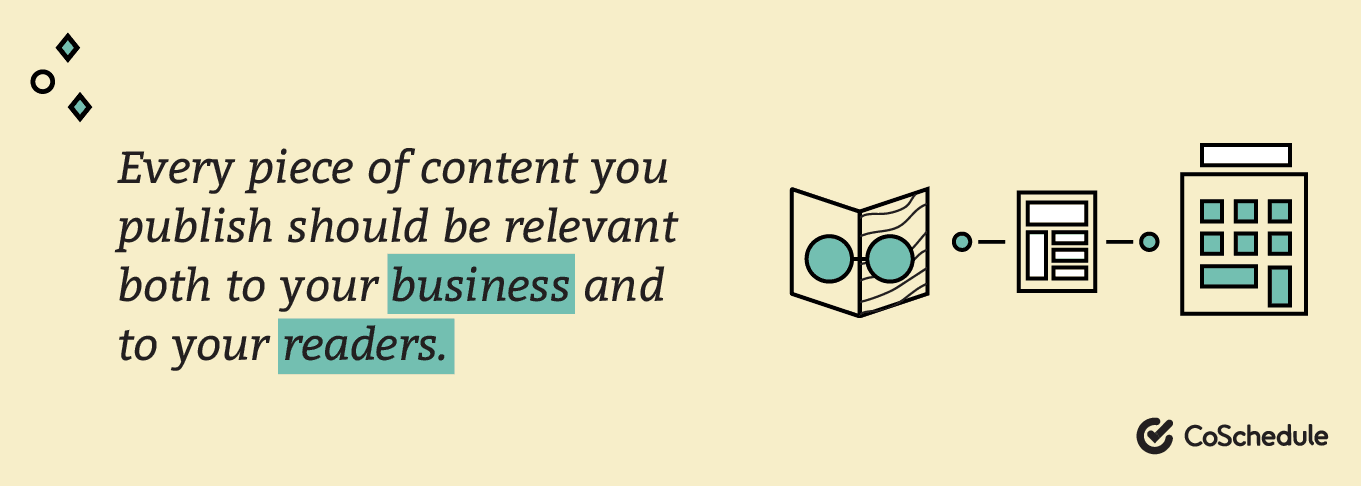
How Do We Implement This?
Anytime we publish a piece of content, we ask:
- Would our target audience care about this? If not, it’s time to scrap that idea and move onto the next one. No time to waste.
- Does this topic tie into our product’s purpose? If not, is it really something our audience would expect us to publish?
- Is this something we can speak authoritatively on? If not, why would anyone listen to us?
A more concrete means of determining relevance is to check who else is covering that topic. If sites or companies we consider peers, friends, or competitors are covering it, then that’s a strong indicator it’s relevant. Of course, we take things on a case by case basis though, using our best judgment.
This is what works for us. However, every company (and marketing team) is different. Your standards of performance should reflect what’s unique about your company, philosophy, and approach.
Here’s How to Get Started
Don’t know where to begin? Here are some starting points to consider:
- Identify what your competition’s current content doesn’t do. Then, commit to doing what they won’t with every piece you publish.
- Know what makes you unique. There’s no point in publishing more content that looks and sounds exactly like your competitors. Figure out what separates you, and incorporate that into your editorial values.
What Comes Next: Putting Your Principles Into Practice
We have tons of resources on our blog that can help you execute 10X content that will build your business:
Ideation:
Strategy
Content Creation
Best of luck creating and implementing your own editorial guidelines. May they keep your brand consistent (and your content manager happy).
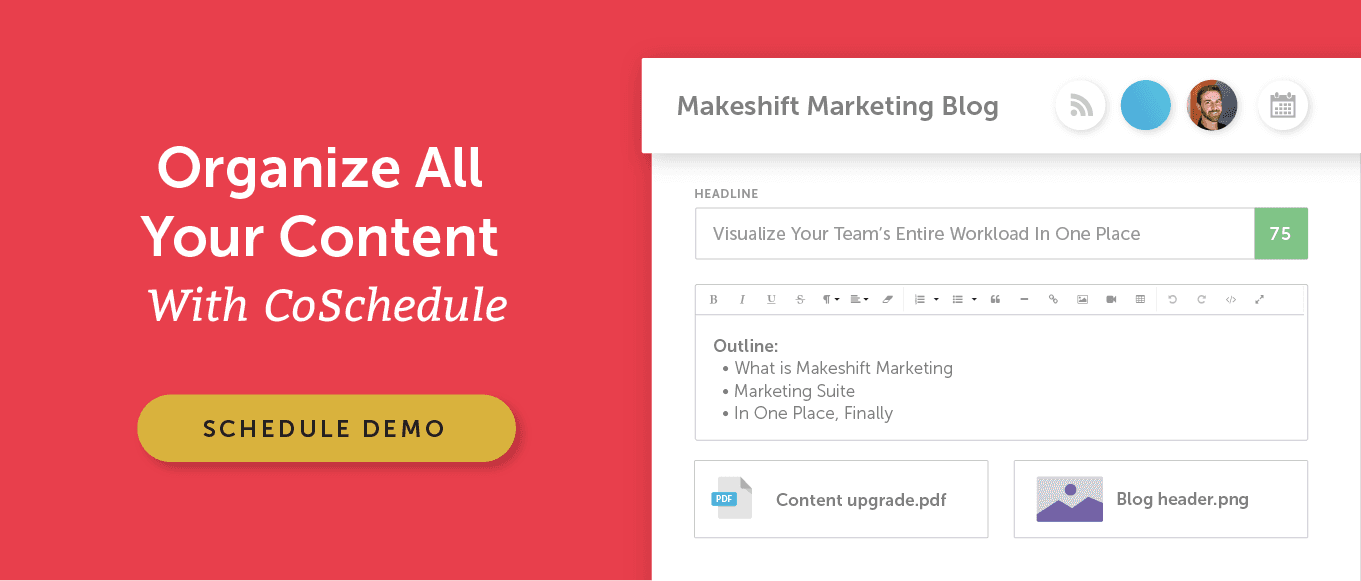
 Creating great content consistently isn’t easy. This is especially true when you’re juggling multiple projects, time gets tight, and you start cutting corners to hit deadlines. Performance declines accordingly.
It’s a downward slope. Stay on it long enough, and you might find content marketing axed from your company’s budget.
So, what’s the solution and how do you prevent that outcome? What's the secret to making sure every piece you publish is the best it can be? And how do you enforce quality across a team of in-house and guest writers? Start by developing strong editorial guidelines.
Different companies may have different names for their style standards and expectations. For example, Help Scout calls them editorial values. Here at CoSchedule, we call them our standards of performance. Whatever term you use, the goal is the same: establishing and documenting a set of core principles that all content must follow.
Creating great content consistently isn’t easy. This is especially true when you’re juggling multiple projects, time gets tight, and you start cutting corners to hit deadlines. Performance declines accordingly.
It’s a downward slope. Stay on it long enough, and you might find content marketing axed from your company’s budget.
So, what’s the solution and how do you prevent that outcome? What's the secret to making sure every piece you publish is the best it can be? And how do you enforce quality across a team of in-house and guest writers? Start by developing strong editorial guidelines.
Different companies may have different names for their style standards and expectations. For example, Help Scout calls them editorial values. Here at CoSchedule, we call them our standards of performance. Whatever term you use, the goal is the same: establishing and documenting a set of core principles that all content must follow.




 Getting this right takes time. However, one single actionable piece of content may be more valuable to your readers (and therefore, your business) than ten pieces that only scratch the surface of any given topic. While how-to content is commonplace, actionable follow-through can still be a key differentiator.
Getting this right takes time. However, one single actionable piece of content may be more valuable to your readers (and therefore, your business) than ten pieces that only scratch the surface of any given topic. While how-to content is commonplace, actionable follow-through can still be a key differentiator.




